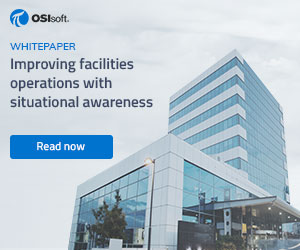The Greenbuild show being held in November 2013 is an annual reminder of how far the green building movement has progressed since its first one in 2004, held in Austin, TX. It also is exciting to see how the green building movement and LEED have evolved over the past year. One of the much-anticipated changes this year is the planned release of LEED v4 at Greenbuild. As you evaluate how to proceed with your LEED-EB O&M certification and recertification projects, there are a few things that you should consider now that LEED v4 has hit the streets.
To allow a gradual transition to LEED v4, the USGBC will allow users to choose between applying under LEED v3 or LEED v4 for about two years before using LEED v4 becomes the only option. So if you are considering implementing a LEED-EB O&M project in the coming years, you should evaluate how the two options work for your building. A good “big-picture” way to look at this choice is that people have figured out by now how LEED-EB O&M v3 works whereas there will be a learning curve for LEED-EB O&M v4. On the other hand, v4 will be closer to the inevitable LEED v5, so using v4 now will give you a leg up on future recertification under v5. At a more detailed level, you will need to evaluate all the prerequisites ad credits and decide which rating system fits the best for your building.
Energy and Atmosphere Credit Category
The number one change in LEED-EB O&M v4 is that the minimum energy performance prerequisite has changed from an Energy Star Score of 69 to an Energy Star score of 75, which is also the performance level required for an Energy Star Building Label. So what does this mean for you as a building manager? If your building has an Energy Star rating of 75 or above, you can go for v4 certification; if your building’s score is between 69 and 75, you can pursue v3 now and you’ll have an additional five years to get your building’s Energy Star score up to 75 for your next recertification.
Water Efficiency
LEED-EB O&M v4 reduces the number of points available for water efficient landscaping from five points to two points.
Sustainable Sites
LEED-EB O&M v4 increases the required site area that must be covered in native or adaptive vegetation from 5% to 20% of the entire site (including the building footprint) and adds a minimum area requirement of 5,000 square feet. For offsite native and adaptive vegetation, v4 adds a new requirement of payment of at least $0.05 per square foot to support the native vegetation provider.
Materials and Resources
For reduced mercury in lamps, LEED-EB O&M v4 reduces the maximum pictograms per lumen hour from 90 to 70. This is a result of the success in the ongoing effort to reduce the amount of mercury used in light bulbs. LED light bulbs are sure to accelerate this trend.
Indoor Environmental Quality
LEED-EB O&M v4 reduces the required score on the Association of Physical Plant Administrators’ cleaning audit from 3 to 2.5, which means things must be cleaner.
Conclusion
LEED keeps evolving, based on the improved achievements in each cycle. Whichever version you choose to pursue in the next two years, we should all be proud of the ongoing progress.




